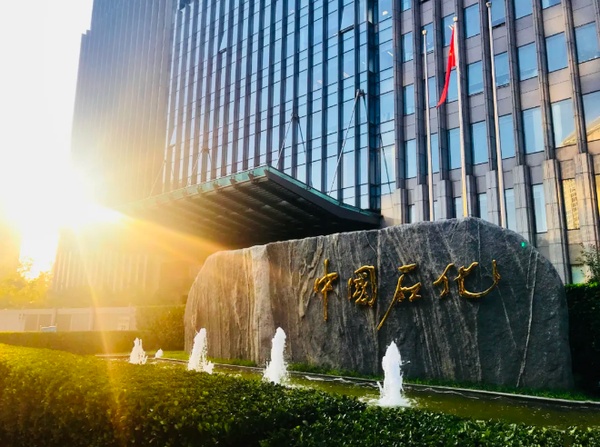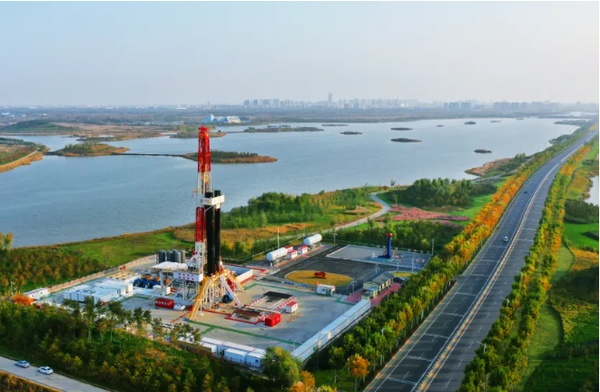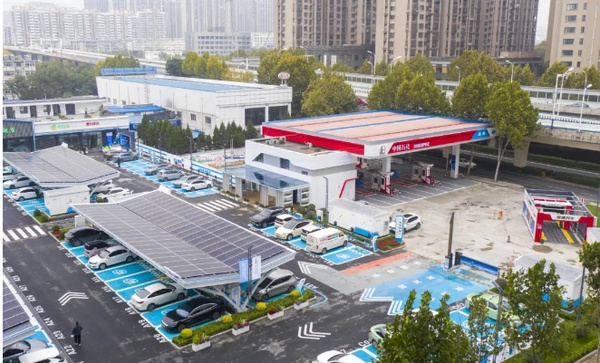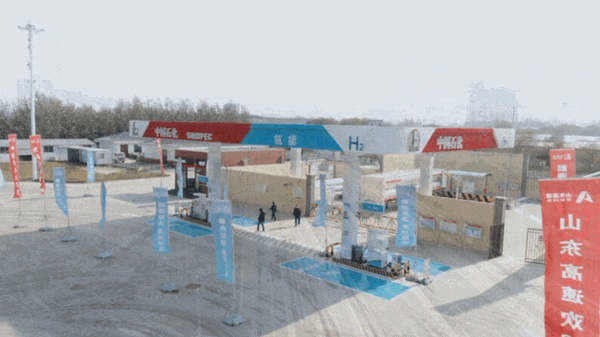$36.878 billion, a massive dividend! What chemical industry trends does Sinopec's 2024 annual report reveal?
On March 23, Sinopec released its 2024 annual report. According to the company's annual report, both the overall performance and the chemical sector's performance of Sinopec have declined.
Against the backdrop of a deep adjustment in the global energy structure and increased volatility in international oil prices, it is actually within expectations that Sinopec's business is under pressure. So, what information does this report convey? From which aspects should people in the chemical industry view Sinopec's annual performance? PlastInsight will provide an interpretation from five perspectives.

businessperformancetopoint
According to the International Financial Reporting Standards, Sinopec achieved operating revenue of RMB 3.07 trillion, and the profit attributable to Sinopec shareholders was RMB489.4billion yuan, earnings per share RMB 0.404 yuan.
Sinopec focuses on shareholder returns, expecting to distribute a cash dividend of RMB 0.286 per share (including tax) for the full year.The total amount of cash dividends, after consolidating with the repurchase amount, is 36.878 billion yuan., calculated according to Chinese enterprise accounting standards, the dividend payout ratio reaches 73.3% of the net profit attributable to the shareholders of the listed company in the consolidated financial statements.
oil and gas equivalent production 515.35 million barrels, natural gas production 140.04 billion cubic feet, a year-on-year increase of 4.7%, the full natural gas industry chain profit reached a historical high, domestic oil and gas reserve replacement rate144%;
Processed 2.52 billion tons of crude oil, with kerosene production increasing by 8.6% year-on-year, and PX production reaching a new historical high; the total sales volume of refined oil products was 2.39 billion tons.
The emerging industries such as charging and swapping of electricity, hydrogen, biofuels, CCUS, etc., are developing rapidly, with more than a thousand gas stations and over ten thousand charging and swapping stations built.
Sinopec has formulated its first market value management system, considering market value management as a long-term strategic management practice. Meanwhile, the board of directors reviewed and approved a new round of share repurchase authorization. From 2021 to 2024, Sinopec repurchased shares worth a total of RMB 8.635 billion.

company announcement screenshot
I. Financial Resilience Highlighted: Strategic Confidence Behind High Dividend Payout Ratio
In 2024, Sinopec achieved a revenue of 3.07 trillion yuan, with a net profit attributable to shareholders of 489.4 billion yuan. Although the revenue scale has seen a slight decline compared to the previous two years, in the context of global energy companies generally facing pressure, its operational quality has shown significant resilience. Notably, the company increased its annual profit distribution ratio to 75%, expecting to distribute a cash dividend of 0.286 yuan per share, coupled with ongoing share repurchase plans (a cumulative repurchase of 8.635 billion yuan from 2019 to 2024), demonstrating a strong commitment to shareholder returns. This confidence in maintaining high dividends countercyclically stems from the company's precise control over cash flow management: the upstream oil and gas sector contributes stable cash flows, the refining and chemical business enhances profitability through structural optimization, and the new energy business gradually forms economies of scale.
In terms of capital expenditures, the company maintains a balance between strategic determination and flexibility. The cumulative investment in ten key projects amounts to 90.965 billion yuan, including both traditional energy production capacity enhancement projects such as Sichuan West natural gas and Shengli shale oil, and transformation and upgrading projects like Zhenhai Refining's high-end new materials and the Tianjin Nangang ethylene industry cluster. This investment strategy that equally emphasizes 'stabilizing the present' and 'planning for the long term' accumulates potential for future development.
II. Traditional Business Foundation: Full Industry Chain Optimization to Rebuild Competitiveness
In the traditional energy sector, Sinopec continues to consolidate its leading position in the industry through technological innovation and management upgrades. The upstream business achieved an equivalent oil and gas production of 515.35 million barrels, with natural gas production increasing by 4.7% year-on-year, and the domestic oil and gas reserve replacement rate reached 144%. Major exploration breakthroughs such as ultra-deep shale gas in the Sichuan Basin and shale oil in the Shengli Jiyang area indicate that the development technology for unconventional oil and gas has reached world-advanced levels. The refining and chemical sector demonstrated strong market adaptability: crude oil processing remained at a high level of 252 million tons, and through strategies like 'oil-to-chemicals' and 'oil-to-specialties', kerosene production increased by 8.6%, while the capacity for basic chemical raw materials such as PX and ethylene continued to be released, laying a raw material foundation for the development of downstream new materials.

China Petrochemical Shengli Jiyang Shale Oil National Demonstration Zone
The transformation of the refined oil sales network into integrated energy services has been remarkably effective, with the number of 'oil, gas, hydrogen, electricity, and service' integrated stations exceeding ten thousand, and the volume of ship fueling business steadily ranking second globally. This full-chain optimization of traditional businesses not only ensures current benefits but also provides channel support for the expansion of new energy businesses.

Sinopec's first super charging and battery swapping integrated energy station - Anhui Petroleum Zhongzhong Integrated Energy Station
III. Accelerating Green Transformation: Building a New Ecosystem of Diverse Energy Complementarity
Under the guidance of the 'dual carbon' goals, Sinopec's energy revolution has accelerated. In the hydrogen energy sector, 11 fuel cell hydrogen supply centers have been established, and the 'Beijing-Shanghai Hydrogen Corridor' demonstration project has opened up the main artery for hydrogen energy applications; the charging and battery swapping business has formed a network of ten thousand stations, integrating with existing gas stations to create an energy replenishment ecosystem for travel; CCUS technology has achieved a 20.1% increase in CO2 capture, forming large-scale applications in demonstration bases such as the Shengli Oilfield. These layouts are not simply a superposition of businesses, but through the synergistic development of 'traditional energy + new energy', they build a modern energy system that is complementary in multiple ways.
It is noteworthy that the company has innovatively proposed the 'Ten Thousand Stations Basking in Light' action plan, utilizing the rooftop resources of gas stations across the country to build photovoltaic power stations. This model of 'self-generation and self-use, with surplus electricity fed into the grid' not only reduces operational costs but also creates green revenue, forming a unique distributed energy solution.

IV. Science and Technology Innovation Drives: Activating a New Engine for High-Quality Development
The data of 9666 patent applications and 5550 authorized patents in the annual report confirms Sinopec's strategic determination of 'establishing the enterprise through technology.' The breakthrough in deep shale gas development technology has significantly increased the single-well production of the Sichuan Basin gas field; the world's first cyclohexene esterification hydrogenation unit has been put into operation, promoting the upgrade of the nylon industry chain; the digital twin system of the intelligent ethylene plant has achieved full-process optimized control. The industrial application of these innovative achievements is reshaping the core competitiveness of the enterprise.
In the integration of artificial intelligence and industrial internet, the company is focusing on building smart energy enterprises, such as: Jiangsu Oilfield applying artificial intelligence technology to achieve intelligent interpretation of velocity spectra, with prediction accuracy exceeding 90%; deployment of AI digital employees at gas stations in Henan, Jiangsu, and other places, achieving voice interaction, seamless payment, and more. Technological innovation has upgraded from a supporting tool to the core driving force for value creation.
V. Chemical Industry Sector's Growing Pains: Structural Adjustment Breeds New Opportunities
Despite the operating losses in the chemical division, it is necessary to view the underlying deep structural adjustments dialectically. The 10 billion yuan loss mainly comes from fluctuations in the prices of bulk basic chemicals, but the proportion of high-value-added products continues to increase: specialty oils have achieved import substitution in the aerospace field, and the domestic market share of high-end polyolefin materials has exceeded 25%, with the capacity for biodegradable materials ranking among the top three in the industry. As high-end new material projects in Zhenhai, Tianjin, and other places are put into production one after another, the optimization of the product structure will gradually deliver benefits.
chart Sinopec's chemical business operation in 2024 (source: Sinopec)

The company is reshaping its chemical competitiveness through a dual-wheel drive of 'basic + high-end': on one hand, it is expanding the scale of advantageous products such as ethylene and PX to maintain its voice in the industrial chain; on the other hand, it is focusing on breakthroughs in strategic areas such as medical polymers and new energy materials. This adjustment pain is actually an inevitable path for industrial upgrading. Aligning with the development paths of international giants like BASF and Dow, Sinopec's chemical business is at a critical leap from 'big' to 'strong'.
Six, ESGGovernance Upgrade: Sustainable Development Builds New Advantages
Sinopec has deeply integrated the ESG philosophy into its development strategy, with a 4.9% decrease in comprehensive energy consumption per ten thousand yuan of output value, a 9.4% increase in methane recovery, and the realization of large-scale production of bio-aviation fuel. In carbon asset management, the company actively participates in the national carbon market trading and explores new models such as carbon sink development and carbon finance innovation. These practices not only respond to global investors' expectations for sustainable development but also set a benchmark in the green transformation of traditional energy enterprises.
Facing the closing year of the 14th Five-Year Plan, the company proposed three major development directions: 'high-end, intelligent, and green'. The company willaccelerate transformation and upgradingUpstream business focuses on consolidating resource foundations to achieve stable growth in oil and gas, refining business accelerates the development of high-end carbon materials, sustainable fuels, and special waxes, oil product sales business, on the basis of consolidating market position, aims to build the number one brand in China for vehicle LNG business, expand and optimize charging and battery swap services, lead by example in scaling up hydrogen transportation, and develop new formats of Easy Joy services, chemical business takes multiple measures to reduce raw material costs and increase the proportion of high value-added products.
concluding remarks
Interpretation of Sinopec's 2024 performance, in the century-long transformation of the energy industry, Sinopec demonstrates a firm resolve and strong execution in strategic transformation: traditional businesses maintain their foundation through lean management, new energy layouts target future growth poles, and technological innovation builds long-term competitive barriers. This development logic of 'seeking progress while maintaining stability, and improving quality while advancing' is precisely the vivid practice of central enterprises in building a modern industrial system.
Editor: Lily
Material sources: Sinopec, DT New Materials, National Energy Administration, China Petrochemical News, China Petrochemical News, China Petrochemical News, Xinhua Red
【Copyright and Disclaimer】This article is the property of PlastMatch. For business cooperation, media interviews, article reprints, or suggestions, please call the PlastMatch customer service hotline at +86-18030158354 or via email at service@zhuansushijie.com. The information and data provided by PlastMatch are for reference only and do not constitute direct advice for client decision-making. Any decisions made by clients based on such information and data, and all resulting direct or indirect losses and legal consequences, shall be borne by the clients themselves and are unrelated to PlastMatch. Unauthorized reprinting is strictly prohibited.
Most Popular
-

List Released! Mexico Announces 50% Tariff On 1,371 China Product Categories
-

Nissan Cuts Production of New Leaf EV in Half Due to Battery Shortage
-

New Breakthrough in Domestic Adiponitrile! Observing the Rise of China's Nylon Industry Chain from Tianchen Qixiang's Production
-

Dow, Wanhua, Huntsman Intensively Raise Prices! Who Controls the Global MDI Prices?
-

Mexico officially imposes tariffs on 1,400 chinese products, with rates up to 50%






